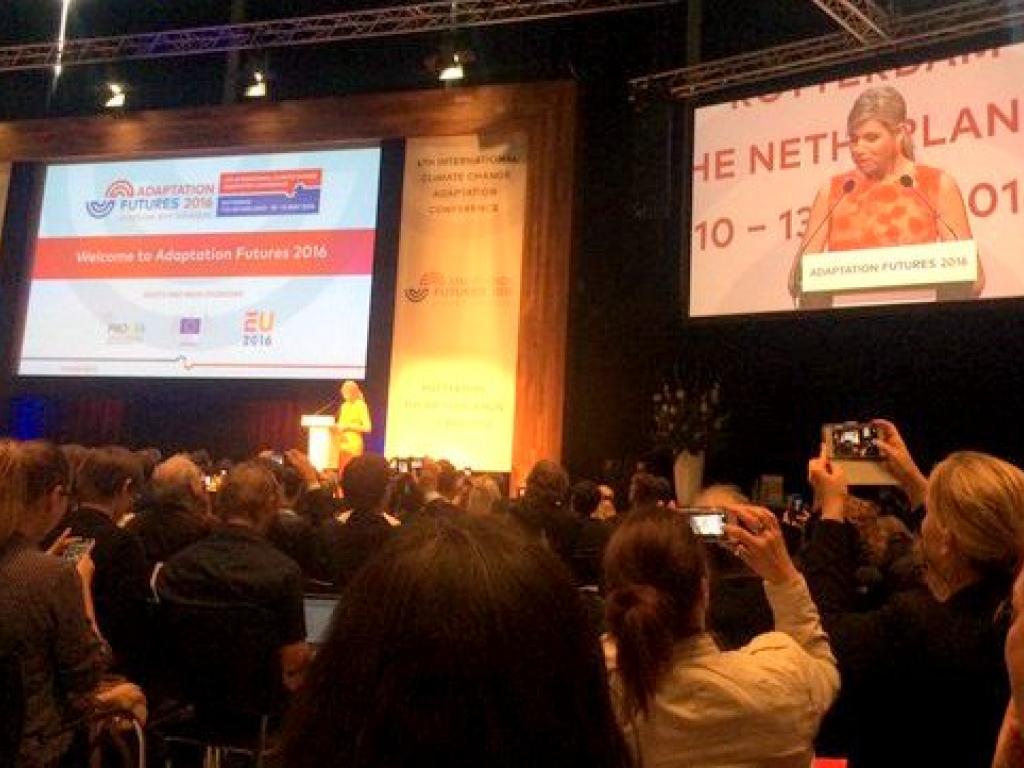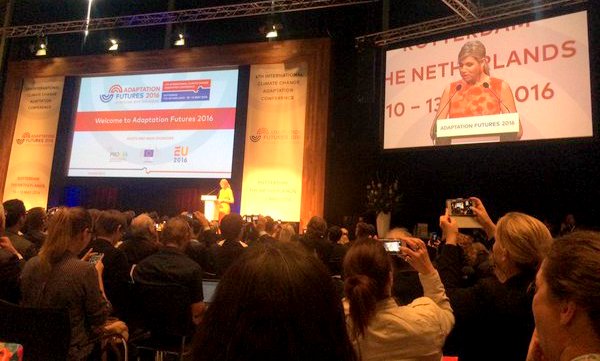How can we rise to the adaptation challenge? Learning from global best practice

By Lucia Scodanibbio
At the beginning of the 2016 Adaptation Futures conference, Christiana Figueres, Executive Secretary of the UNFCCC, stated that it is our moral responsibility to align with the 1.5°C goal that was aspired to in Paris. This effectively means that the peaking of global greenhouse gas emissions should occur within the next five years, and from then onwards emissions should decrease. While Figueres jokingly – yet extremely seriously – invited scientists, policy-makers and practitioners alike to “swallow an alarm clock” in order to radically change what we are doing in the coming half decade, I asked myself how we will ever be able to rise to such an impending challenge.

In his opening presentation, NOAA’s Roger Pulwarty encouraged the conference delegates to think of whether the decisions and actions we continue to take – largely tied to dependencies we have created and development choices we’ve made – are amenable to the problems ahead of us. Even if we agree that there are contradictions, it is not so easy to address them. “A changing climate leads to changes in extreme weather and climate events. [Yet] the rate at which these changes are occurring is faster than the rate at which our institutions are changing and [of course!] even faster than the rate in which many of our traditions have changed and adapted over time”, insisted Pulwarty. The question is not whether we need to change paradigm, but rather “how often we should revise assumptions about the changing nature of the world”.
It is clear that the way we live, issues we prioritise, technologies we favour, processes we use to take decisions, and the scale at which all of this happens need to be revolutionised. While humans are adaptive (as evidenced through our colonisation of even very inhospitable environments), we know that habits – both personal and collective – are very difficult to break. And to add insult to injury, the issues which are in greatest need of transformation, generally attract the most conflict.
Despite mankind's sluggishness to change, numerous sessions at the conference highlighted areas where experimentation is occurring, different technologies are emerging, and innovative ways to make and implement decisions are being explored and tested.
Adaptation Pathways
In the context of complex, contested, emergent and uncertain systems, the adaptation pathways approach described by colleagues from the Australian Commonwealth Scientific and Industrial Research Organisation (CSIRO) talks exactly to some of the challenges outlined above.
- By taking cognisance of the large number of drivers that operate and interact across scales; by designing processes that cater for different forms of knowledge, viewpoints and interests; and by attempting to tackle the systemic – in addition to the proximate – causes of vulnerability, some of the complexity of the challenge can begin to be addressed.
-
By engaging directly with power and politics, with the awareness that these are continuously shifting, one moves beyond addressing climate issues in a “naïve” vacuum.
-
By focusing on “climate compatible development”, positive benefits should be achieved in three realms: for climate adaptation, greenhouse gas mitigation and poverty alleviation aligned with the Sustainable Development Goals.
-
By framing Issues in relation to people’s closest concerns, such as referring to the future in terms of individuals’ children or grandchildren, we may have a higher chance of resulting in action.
-
By creating learning spaces that are safe for making mistakes and where reflection is as important a component as analytical tools and scientific models, experimentation can occur within a context of trust and collaboration.
-
By attempting innovative, yet seemingly intuitive pathways, we stop settling on the most obvious solutions to adaptation (such as vulnerability assessments), which are not appropriate for the scale of the problem, particularly when conducted in isolation.

Some of these ideas were echoed in different presentations throughout the conference. Netherland’s Minister of Infrastructure and Environment talked about the importance of “living labs” where mistakes are accepted. Roger Pulwarty warned about “doing the right thing and not simply rushing to do any thing”, while complaining that “we do not resource the long-standing collaborations that are needed for a changing world”. Christiana Figueres asserted that the climate change lens should be used to address those issues which most hurt in each country, and that may be as disparate as health, cities’ liveability or food security. As she urged delegates to stop hiding behind the aggregate level (and in the process failing at the individual level, which is where responses are most needed) Her Majesty Queen Maxima of the Netherlands agreed, stating clearly that no one should be left behind. Will we be able to rise to these challenges and stop the alarm clock before it rings in five years’ time? Is there any chance of meeting this most fleeting 1.5°C mirage? Do we have the luxury of a choice? Can we learn from the approaches and initiatives that are using out-of-the-box thinking, and attempt to scale those up? This was the hope – and motivation to keep going – for the more than 1,700 delegates attending Adaptation Futures.
All photos by Lucia Scodanibbio
Republished with permission from ASSAR
Disclaimer: The views expressed here are solely those of the author in her private capacity